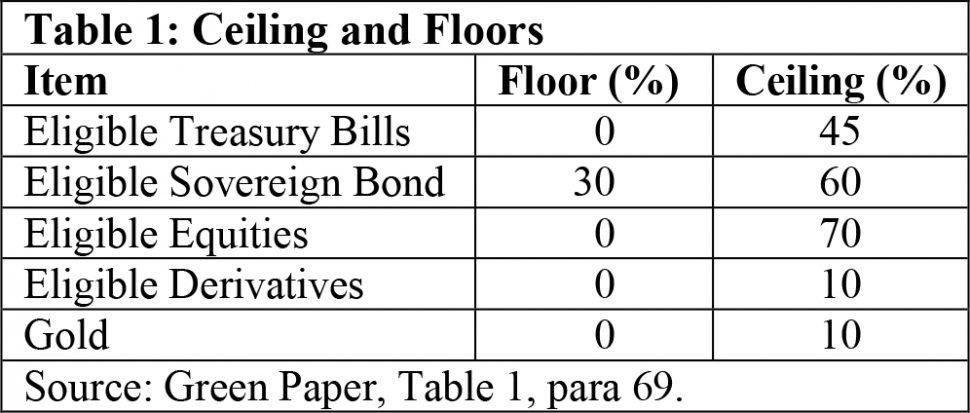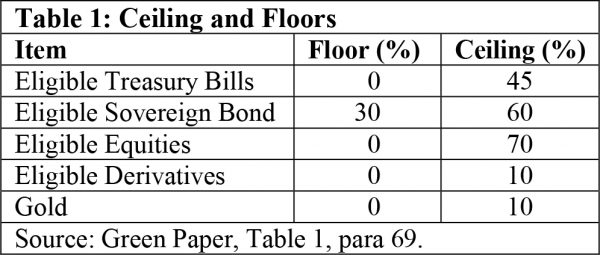Last week I had raised several critical conceptual and analytical concerns related to what I labelled as “the Government of Guyana’s (GoG) well underway priority” of establishing a Sovereign Wealth Fund (SWF)//Natural Resources Fund (NRF). In terms of dollar value, this Fund is almost certain to emerge as one of the GoG’s biggest areas for spending its future petroleum revenues!
Today’s column wraps-up that discussion. It focusses on a revisit of my earlier evaluation of the framework and structure of the recent legislation enacting the NRF in 2019. Afterwards I shall address the two remaining areas of GoG indicated priorities; namely, the long-term priorities, as encapsulated in the Green State Development Vision 2040/UN Sustainable Development Goals, and the National Budget/IMF-type medium term macroeconomic frameworks.
Observation on NRF
My earlier comments on this topic were carried in two separate, but linked set of columns. First there was an evaluation of sovereign wealth funds as a generic prototype and following that, a more specific review of the GoG’s Green Paper on the NRF, all published in 2018.
In retrospect one of my trigger observations about the NRF is that, in keeping with global trends towards self-regulation of SWF’s, Guyana had committed to: 1) its NRF adopting the “Santiago Principles” (discussed below); and 2) a very conservative investment policy. The latter is reflected in a projected rate of return on the NRF’s investments of only three per cent! Further, it is unclear, if this is a return net of all costs incurred by the NRF (both direct and indirect) in the execution of its full range of responsibilities.
Santiago Principles
Historically, SWFs, in response to their embedded state capital/private investor contradiction, have sought over the years to legitimise themselves through developing a set of Generally Accepted Principles and Practices (GAPPs) to cover their operations. In essence, these GAPPs aim at removing any semblance of SWFs operating outside of private, profit-centred incentives! In pursuit of this, SWFs have created what are known today as the 24 Santiago Principles.
When fully on-stream, Guyana’s NRF will subscribe to every one of the 24 GAPPs. These 24 Santiago Principles have been voluntarily agreed to in a compact shared with most of the roughly 50 countries that have SWFs. This arose in 2008 following concerns arising in the early years of the Great Recession of 2007/8 and its associated financial crisis. Because of their state-ownership, SWFs had generated strong apprehensions about their economic and political motivations; incentives framework; manipulation of private markets; opacity; and, their broad avoidance of the “disciplines” of private markets “risk-return incentives”. The IMF has played a leading role in bringing together the key stakeholders in this process in establishing SWFs, especially the global private financial community, and Developed Country Governments.
Space does not allow for repetition of details; but it is generally accepted that these principles form three major groupings. One is the set of principles governing the legal framework, policy purpose, funding, and withdrawal arrangements of SWFs (primarily GAPP 1, 2, 4). Second, there are principles governing the institutional framework and governance arrangements. The main thrust of these GAPPs is to separate the owner (Governments/politicians) from management of the NRF (primarily GAPP 6, 7, 8, 9). The final part is focused on investment and risk-management. The disclosure of investment policies especially objectives, themes, horizons, benchmarks, and strategic asset allocation aims is mandatory. Investment goals of the SWF that are “non-economic or non-financial” should be revealed (primarily GAPP 18, 19, 21).
Investment Management
The preceding comment concerning the investment framework leads to a grave concern. That is the Santiago Principles place enormous pressures on SWFs to declare their investment mandate, management, and strategy framework. This is clearly the reason why Guyana’s legislation is so forthcoming with details. This is not about local transparency. It is all about international pressure. The legislation makes clear the primary roles of Parliament (passage of the NRF Act, processing Annual Budget) and the Ministry of Finance (appointment of Investment Committee, Investment Adviser and Analyst). The Central Bank (Bank of Guyana) is named as the Operational Manager of the Fund.
However, in keeping with the aim of creating “distance/space” between the political class, as owners, and the NRF management, it is clearly stated in the Act’s Green Paper: “Private Managers would manage the overall investment portfolio”. It goes on to make clear that the Investment Mandate fixes the allocation of Fund investments; and identifies the “eligible asset classes” to be held by the NRF and their floor and ceiling limits.
Further, the Green Paper had identified the desired asset classes as: eligible bank deposits; eligible treasury bills; eligible equities; eligible sovereign bonds; eligible derivatives; and, gold. The ceilings and floors of these eligible classes are reproduced in (Table 1).
Source: Green Paper, Table 1, para 69.
As noted above, the NRF is targeted to earn a three per cent return. This is not specified either as a gross or net figure. Furthermore, it is not indicated whether this is a nominal or real return or for that matter, which market prices will be used to adjust nominal to real values. Readers would appreciate the potentially significant variation in the monetary outcome for the numeric values of these targets. A three per cent return seems modest.
Internet searches reveal that the SWF Institute’s website admits to difficulties in finding reliable comparative data aggregates. It does suggest, however, that by 2015, there had been over the previous 20 years an annualised return of 6.5 per cent for SWFs. And, for the previous 30 years their annualised return has been 7.5 per cent. Average portfolio allocations also reveal: 1) Developed country equities (32-42 per cent); 2) Government bonds (10-20 per cent); 3) Real estate (5-10 per cent); and 4) Cash (10 per cent).
Conclusion
The two observations treated above are the most important I wish to make in my overall evaluation of this “well underway priority”. Next week I turn to the other categories of GoG priorities for spending petroleum revenues. Space precludes further discussion of the other “well underway GoG priorities”, which appear in my 2018 columns.








